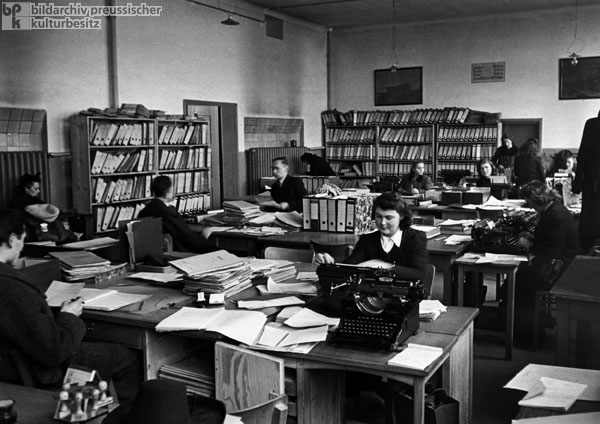|
Preparing for Denazification Hearings [Spruchkammerverfahren] in Nuremberg (February 1, 1947)
The Allies (and the Americans, in particular) demanded that denazification be carried out as thoroughly as possible. In practical terms, however, the implementation of denazification required immense bureaucratic effort. By March 1946, the American military government had received back almost 1.4 million questionnaires it had sent out to Germans, who were asked about their relationship with the NSDAP and its various organizations. Reviewing the information included in these forms was both expensive and time-consuming. Still more costly in terms of time, money, and resources was the registration form introduced in the American zone by the "Law on Liberation from National Socialism and Militarism" of March 5, 1946. Roughly 13.4 million Germans over the age of eighteen were required to fill out this form. Among them were approximately 3.67 million former members of the NSDAP and other Nazi organizations. The "liberation law" created special German courts [Spruchkammern] to carry out denazification, which reported their findings to military government authorities. These courts were supposed to consist of qualified individuals who had not been politically compromised and who, if possible, had been trained as judges or for service in upper-level state administration. But since so many lawyers and officials had had contact with the Nazis and because the process became increasingly inconsistent and thus maligned, it was difficult to fill these court positions. In October 1946, to standardize the proceedings in the four occupation zones, the Allied Control Council issued Directive no. 38. By 1950 more than 950,000 denazification hearings had been carried out in the American zone alone. Photo by Hanns Hubmann.

|


